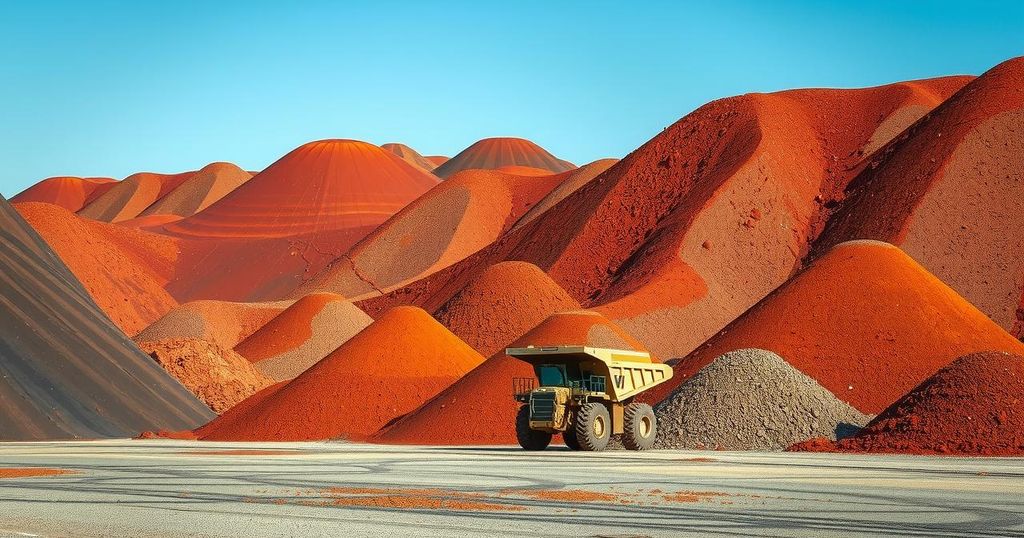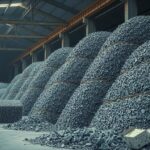Iron Ore Prices Increase Due to Seasonal Demand Despite Production Cuts
Iron ore futures prices rose slightly due to seasonal demand in China. The May contract on the Dalian Commodity Exchange increased by 0.19%, while the April benchmark on the Singapore Exchange was up 0.61%. Despite a rise in steel output, the market faces capacity cuts and mixed performances of related materials, prompting concerns about overall demand stability.
Iron ore futures experienced a slight increase on Wednesday, primarily driven by seasonal demand in China for this essential steelmaking material. Despite this uptick, output reductions by several steel manufacturers in the region tempered further gains. Specifically, the most frequently traded May iron ore contract on the Dalian Commodity Exchange closed 0.19% higher at 780 yuan (approximately $107.38) per metric ton.
Additionally, the benchmark April iron ore on the Singapore Exchange saw a rise of 0.61%, reaching $102.20 per ton as of 0707 GMT. As reported by Hexun Futures, key steel producers in China recorded a daily crude steel output of 2.75 million tons thus far in March, representing a 1.6% increase from the previous month. The resumption of production from blast furnaces that underwent maintenance contributed to this increase, alongside a month-on-month rise in the average daily molten iron output.
However, analysts at ANZ pointed out that while the industry is entering its typical peak construction season, iron ore prices remained stable. This stability was attributed to observed weaknesses within the steel market that offset demand gains. Furthermore, Rizhao Iron & Steel is set to dismantle four blast furnaces, which will eliminate an annual hot metal output of 1.9 million tons, as indicated by consultancy Fubao.
Production reductions commenced for several steel manufacturers in China’s Xinjiang region, following directives from Beijing aimed at addressing the industry’s chronic overcapacity issues. In related trading activity, other steelmaking raw materials exhibited mixed performances on the DCE. Coking coal declined by 0.05%, while coke rose by 1.35%. On the Shanghai Futures Exchange, most steel benchmarks advanced, with rebar increasing by 0.06%, hot-rolled coil up 0.12%, and stainless steel rising nearly 0.4%; however, wire rod experienced a slight decrease of 0.35%.
According to the latest exchange rates, one US dollar is equivalent to approximately 7.2640 Chinese yuan.
In summary, iron ore prices are experiencing a modest increase due to seasonal demand in China, although production cuts by steel manufacturers are curbing further rises. Despite a noted increase in crude steel output, analysts remain cautious about overall market strength. Upcoming dismantling by Rizhao Iron & Steel and newly implemented production cuts in Xinjiang highlight ongoing adjustments within the steel industry as it grapples with capacity issues. The mixed performance of other steelmaking materials further emphasizes the complexities of the current market dynamics.
Original Source: www.tradingview.com








Post Comment